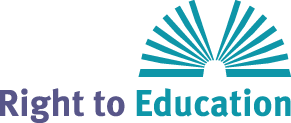This Guide is intended to be a comprehensive resource for finding out more about the Charter on the Rights and Welfare of the Child and the African Committee of Experts on the Rights and Welfare of the Child. It provides practical information for organisations wishing to engage with the Committee but also relevant background information to ensure that this engagement is put into context. As such it is designed to be used by organisations who already use and know the Charter but want specific information about how to engage with the Committee by, for example, finding out about the procedure for submitting a communication; it can also be used by organisations new to the Charter and the Committee who are interested in reading about its history and background.
The Guide is split into six Parts:
• Part One is an introduction to the Guide.
• Part Two gives an overview of the history and content of the ACRWC and looks at how it relates to the CRC. It also considers the Committee’s mandate, its members and its achievements so far.
• Part Three is the most practical section and examines how civil society can access and use the Committee to advance children’s rights in Africa.
• Part Four looks at how the Committee fits into the structures of the African Union (AU).
• Part Five provides sources of further information.
• Part Six consists of nine annexes including a ratification table for the Children’s Charter, biographies of current Committee members, the full text of the Charter and six of the Committee’s working documents.
The 21 case studies discussed in this volume clearly illustrate that a wide variety of economic, social and cultural rights are justiciable. Moreover, this publication set out many concrete examples where legal action has made a difference and has unquestionably progressed the actual realisation of the rights.
Litigating Economic, Social and Cultural Rights: Achievements, Challenges and Strategies also reveals the many practical and theoretical obstacles that have been encountered in social action litgation.
Ceci est le document nº1 des 3 documents conçus pour présenter le récent travail de recherche et de plaidoyer mené par l’Initiative mondiale pour les droits économiques, sociaux et culturels, en partenariat avec les organisations de la société civile dans 7 pays du monde, ainsi que l’Initiative sur la privatisation de la recherche dans l’éducation et le Right to Education Project. Le travail examine de façon critique les effets de la privatisation de l’éducation en utilisant des mécanismes des droits de l’homme. Les documents sont conçus pour servir d’introduction à ce travail et l’Initiative mondiale pour les droits économiques, sociaux et culturels peut apporter d’autres ressources, des informations et une aide à quiconque souhaiterait s’engager dans cette étude.
Accéder au document n°2: Comment utiliser les mécanismes des droits de l’homme
Accéder au document n°3: Études de cas sur les rapports parallèles pour faire face à la privatisation de l’éducation
The Strategic Litigation Working Group (SLWG) has launched a discussion paper with eight key proposals regarding the follow-up on views issued by United Nations human rights treaty bodies (UNTBs). ESCR-Net’s SLWG recognises the significance of decisions issued by UNTBs under the complaints procedures (Views) in the advancement of human rights enjoyment by people around the world, and welcomes the past action and willingness of the UNTBs to continue developing constructive practices regarding the impact and implementation of such Views.
Three principles underpin the SLWG’s proposals: the principle of non-repetition (consistently applied by the HRC in its views and by the CESCR in its General Comments); the principle of reasonableness (developed by the CESCR through its General Comments and 2007 Statement on Maximum Availability of Resources, and made explicit in the OP-ICESCR); and the principle of participation (recognised under a number of UN human rights treaties). Taking into account the practice of different international and regional human rights bodies, the SLWG proposes that the three principles should be applied during the consideration of a case, follow up and implementation, in order to maximise the effectiveness of human rights remedies.
While many authorities can tolerate some traditional campaigning methods, it is usually harder to ignore the law. As part of broader campaigns, the law can be a powerful tool for achieving the changes that children need. Legal advocacy is now being used systematically in a few countries – leading to strong outcomes for children – and it has great potential for wider use.
There are many occasions for legal advocacy. International law sets out the principles and standards that states are obliged to meet but frequently do not, and so their domestic law violates children’s rights. Often, a state meets a standard in domestic legislation but its policy fails to implement the law. Sometimes, it is unclear what a law means in practice, or the meaning is clear but no one knows whether it is being implemented. These various gaps between international legal standards, domestic law and state policy (or corporate policy) present potential opportunities for legal advocacy.
There are also many avenues for legal advocacy. It is a broad term, not limited to taking rights violators to court. Many small-scale legal activities can enhance traditional campaigning, such as reporting on the implementation of a law, or raising awareness of what the law says. Sometimes, simply documenting and publicising the gaps between law and practice is enough to persuade decision-makers to act. But only sometimes. Towards the other end of the spectrum is work that demands more time and resources, including taking a government or corporation to court in order to bring broader social change. A successful case might improve the legal standards that apply to children, or lead to a major policy change of long-term benefit to children.
This introductory guide offers a brief overview of avenues for legal advocacy. It also offers guidance on how to explore your options, and how to promote legal advocacy work with other children’s rights advocates.
